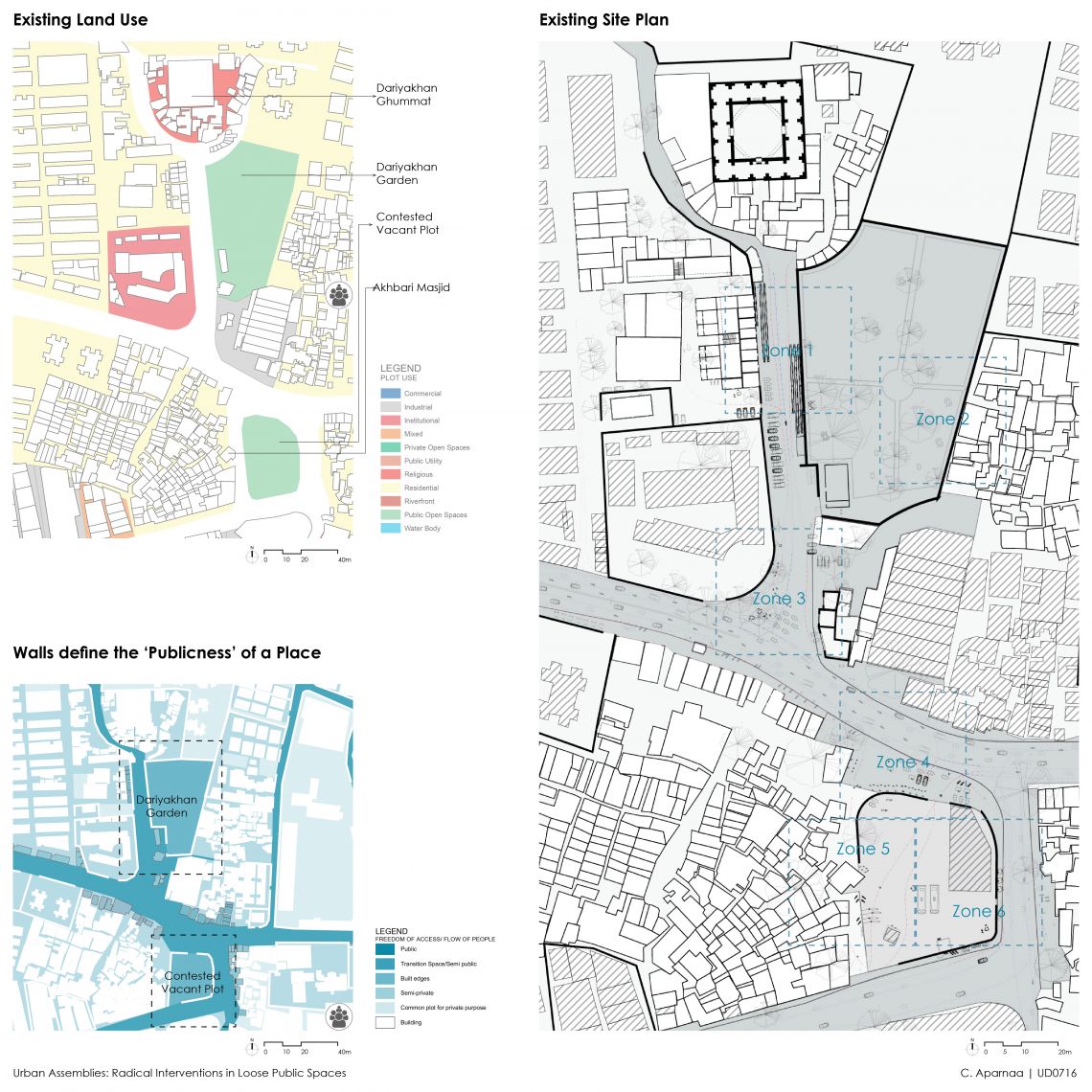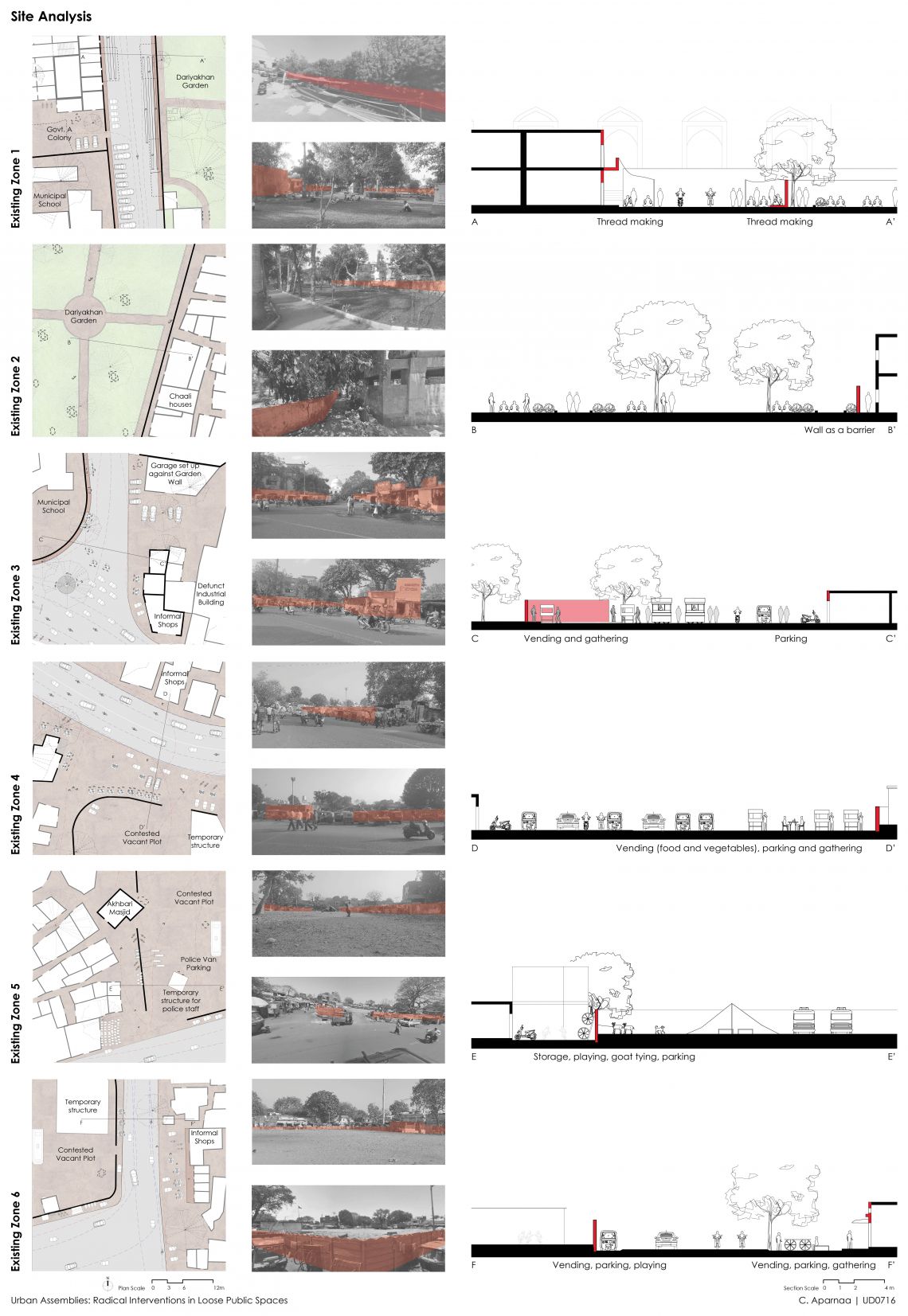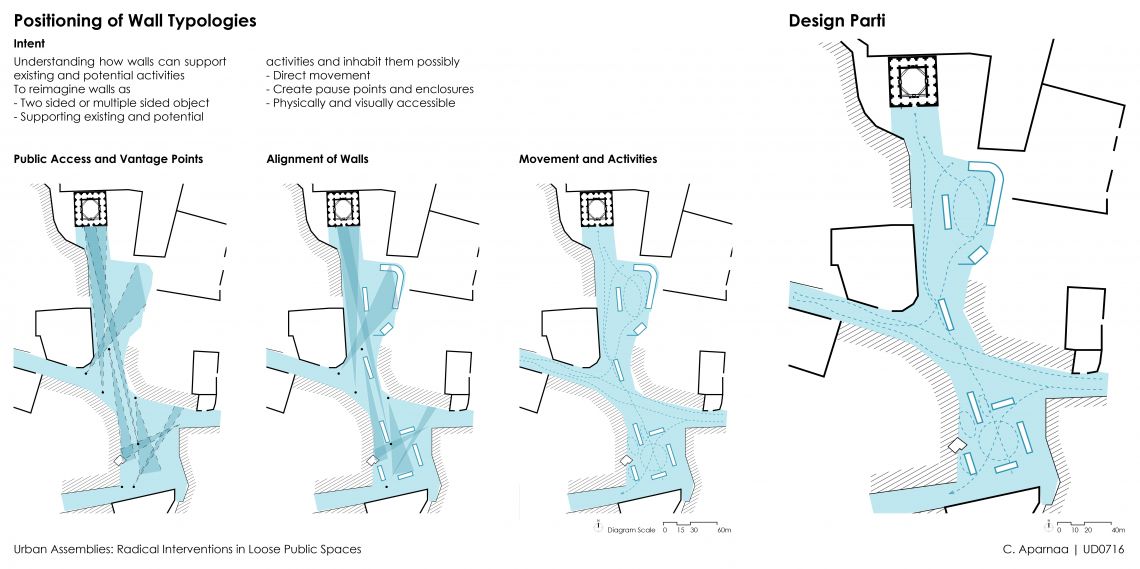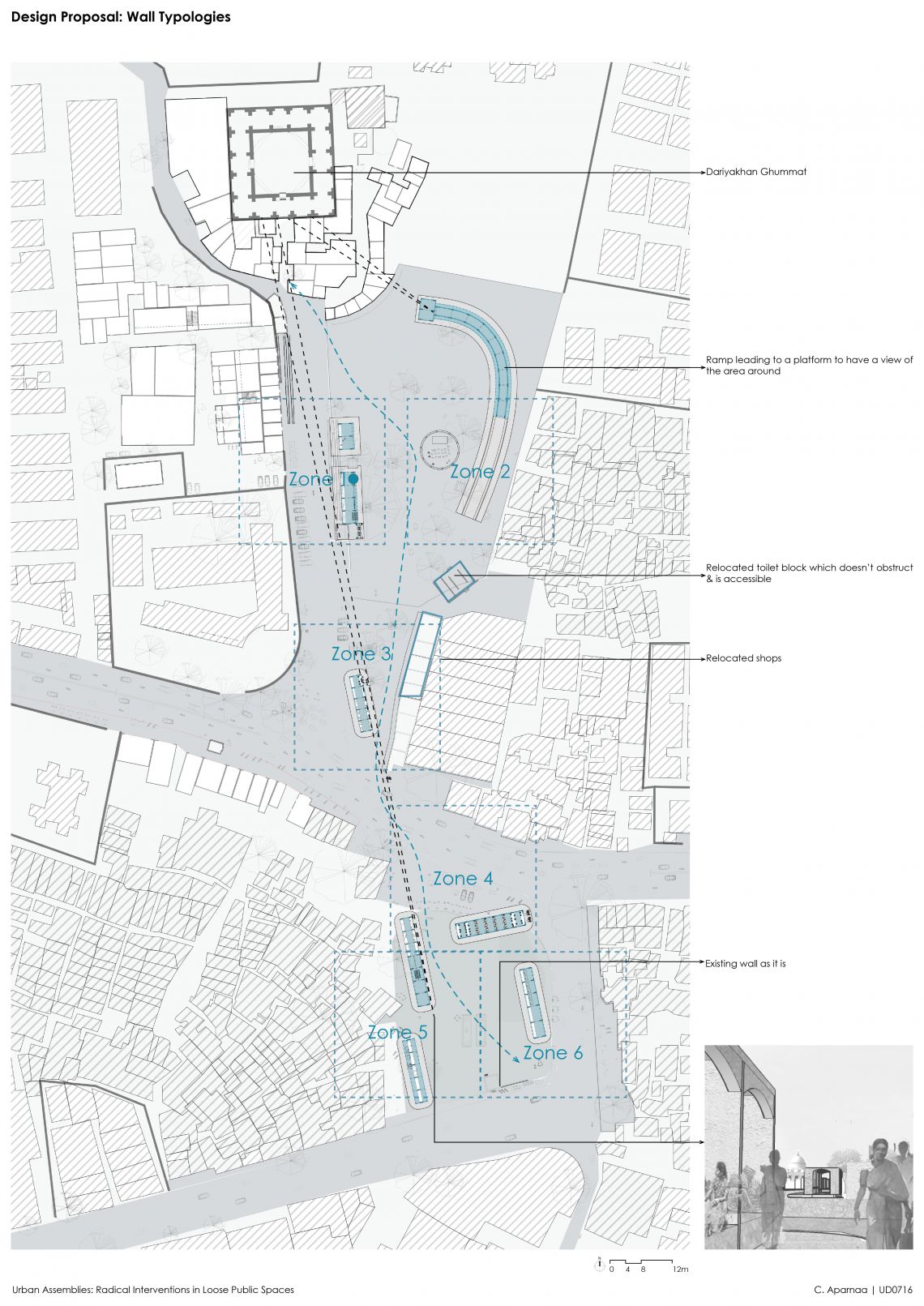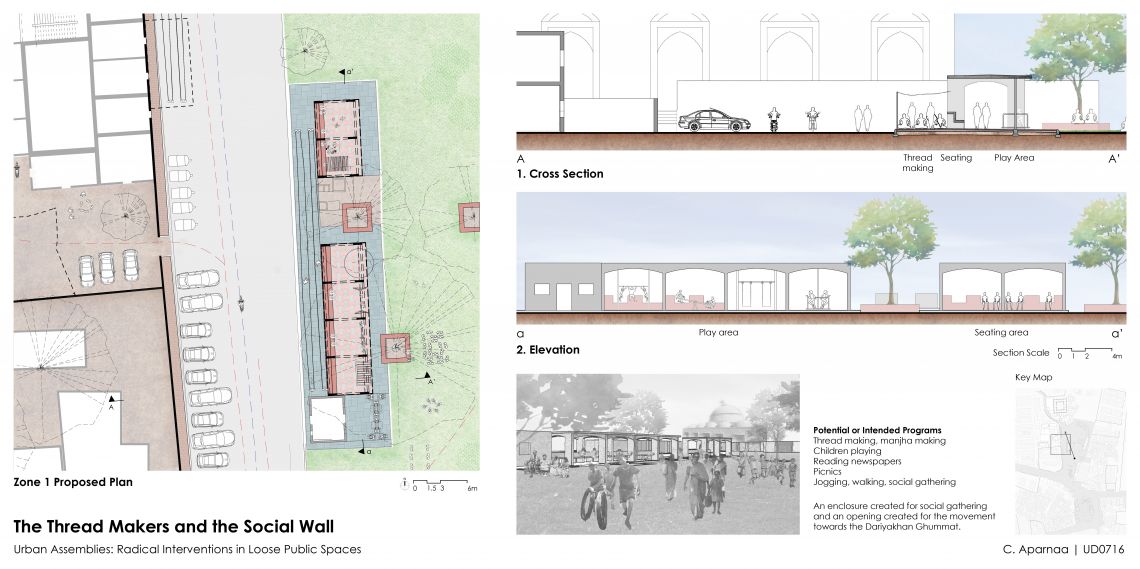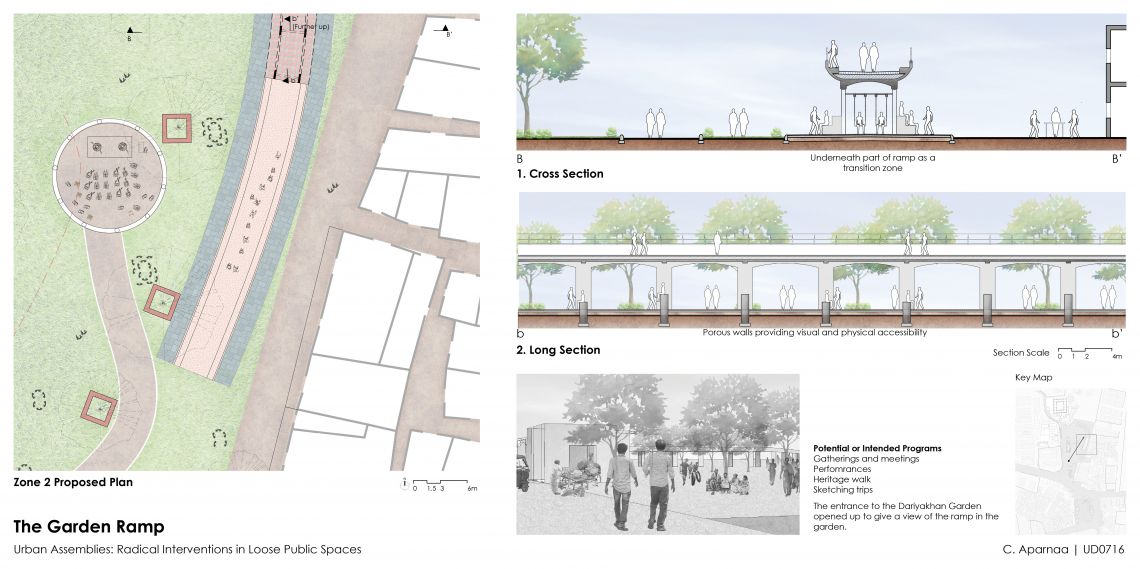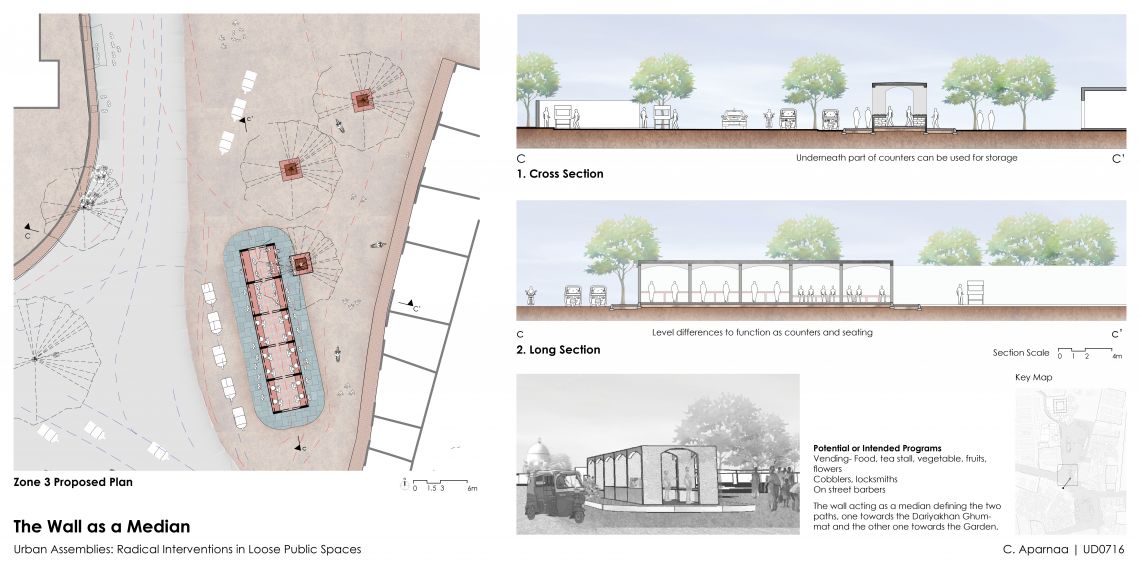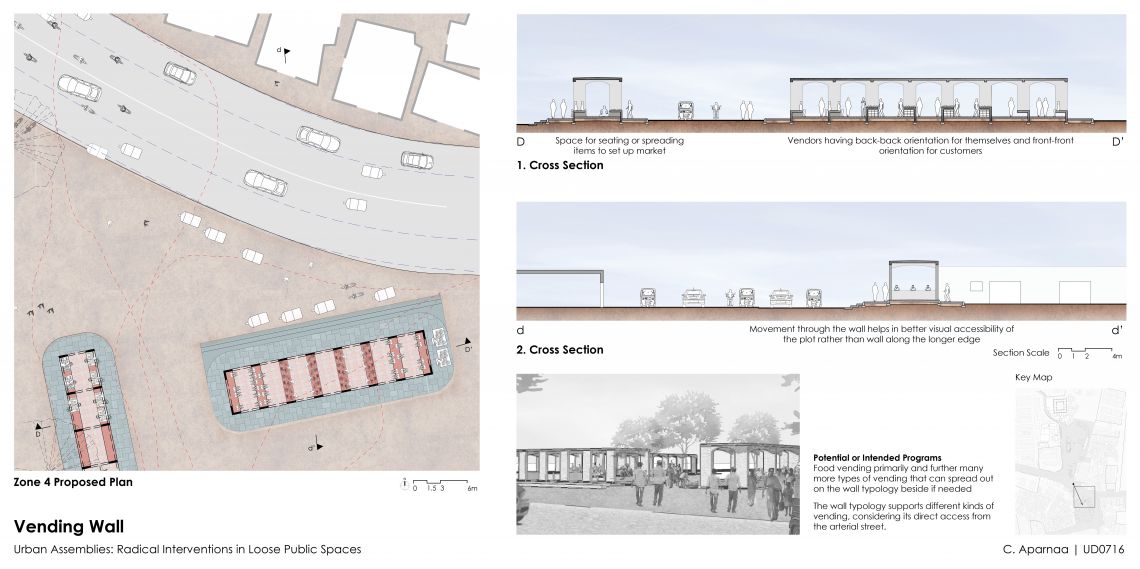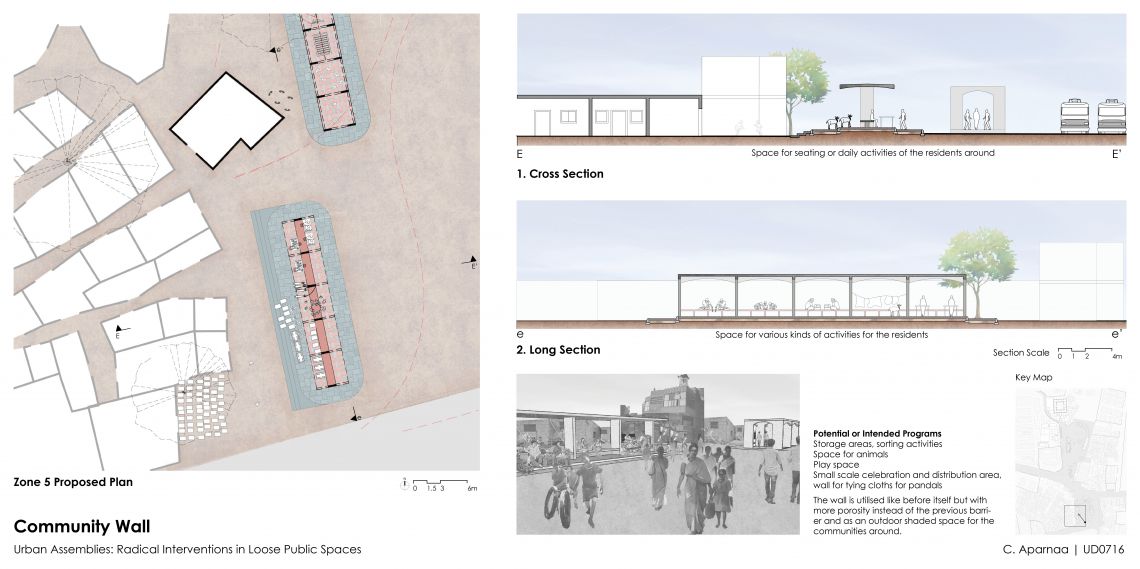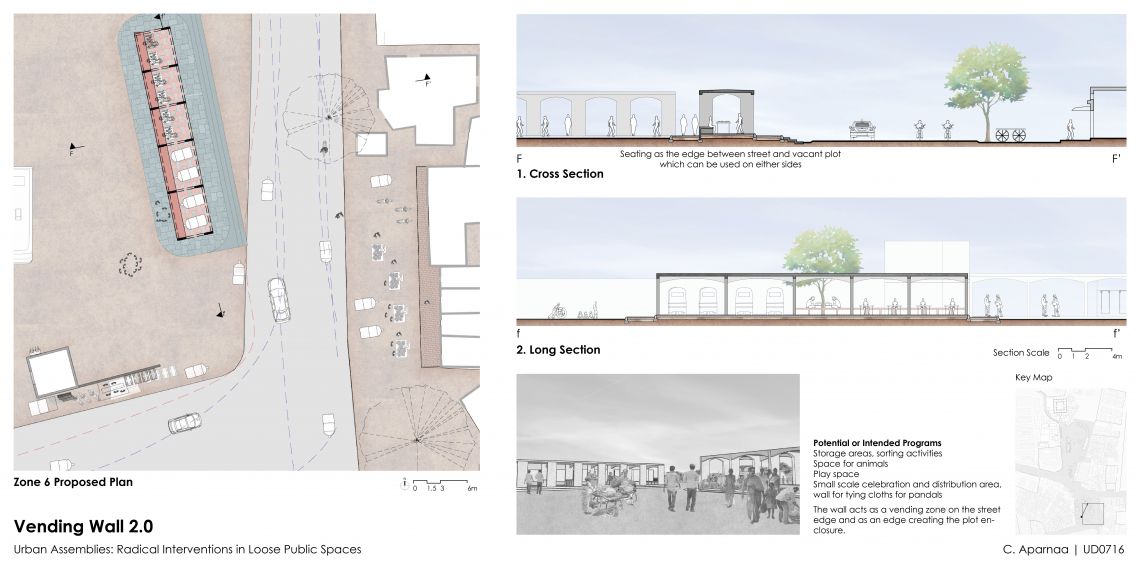Your browser is out-of-date!
For a richer surfing experience on our website, please update your browser. Update my browser now!
For a richer surfing experience on our website, please update your browser. Update my browser now!
Imagine having such good public infrastructure provided by the government only to be hidden away and underutilized because of the walls!
In today’s world, the pandemic has thrown light upon the need to have better planned open and public spaces for the well-being of the citizens. Many of the parks, gardens and privately owned vacant plots are currently well established and utilized on a temporary basis, but they are often hidden away behind the walls. Hence, we need to reimagine these walls. The project looks at how walls might be rethought to cater to existing and potential activities, as well as define movement and pause points that are visually and physically accessible.
